The Language of Beads – African Decorative Beads
PRIMITIVE - Friday, January 09, 2015 |
|
|
|
由Misaki Imagawa
你在一个洞里漆黑一片。有no sense of direction, distance or boundaries. You’re alone with yourself and your imagination. You can’t decide if it’s comforting or terrifying. You light a gas lamp and suddenly you spot small white dots in the blackness; first one, then more, some round, others oval. Are they shells? You reach out and touch one, but in your hand it turns out to be a pebble? You reach down to grab another and to your surprise a wooden bead is in your hand. Now something glitters in the dark. It is gold, and upon further examination you discover tusks of ivory and human bones. You illuminate a path before you and colors rain; first blue, then red and green. A cascade of glass beads lights up the dreamscape. They form a path of mismatched ornaments, shifting and rolling, forming a timeline whispering of ages past and lost.
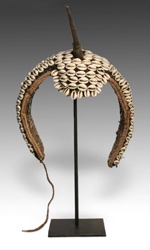 |
|
|
PRIMITIVE ID# A0602-425 |
Your imagination takes over. You find yourself flowing back hundreds, thousands, tens of thousands of years, until the darkness is illuminated by a beautiful coast. At the edge of the water a young man, one of modern man’s predecessors, dips his hand into a shallow pool and plucks out a tiny, abandoned shell of a snail. From his leather pouch he pulls out a string of beads hanging from a cord, slips this latest piece on the cord and then ties the whole thing around his neck. In due time, he makes his way back to his home, a cave in what is now South Africa, where you are standing, imagining what life must have been like for your unseen friend, the young man who took the time to adorn his life, back then, when survival was the only occupation available to the ambitious.
Welcome to the Blombos cave of South Africa. In 2004, archeologists discovered a string of shells dating to 75,000 years ago. This discovery provided new evidence that the modern concept of self – as evidenced by the desire to adorn one's self – appeared much earlier than previously believed. Yet, regardless of when man’s earliest creation of jewelry began, it has continued, unabated, until today, particularly in Africa; and it is most evidenced through the study of beads.
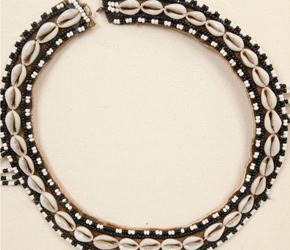 |
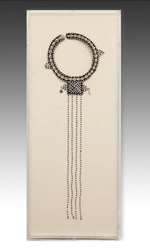 |
|
|
|
||
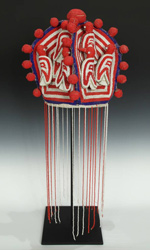 |
|
|
PRIMITIVE ID# A0402-440 |
The history of beads is as rich as their use and application. They functioned as adornments, decorations, money, indications of power and prosperity, and as talismans. In the beginning, they were adornments and were made of materials readily available in the environment: shells, clay, seeds, twigs, stones, ivory, teeth and bones. Numerous samples of these have been traced back roughly 12,000 years, indicating the popularity of decorative beads among various tribes. As populations thrived and trade flourished, greater value was placed on rarer beads. Cowrie shells, imported from the Maldives, became a prominent form of currency and a public display of wealth, power and prestige. The symbolic use of cowrie shells is still a widely held tradition in African beading today.
非洲玻璃珠的历史同样多样化和独特。在马里,罗马风格和埃及托勒密时期的玻璃珠最早可追溯到公元前300年至公元200。在印度和斯里兰卡似乎还创建了其他早期进口,例如古老的玻璃伊斯兰玻璃珠。历史学家认为,这些稀有而有价值的宝石进入了非洲的海外或通过与古埃及和地中海相连的骆驼大篷车路线。
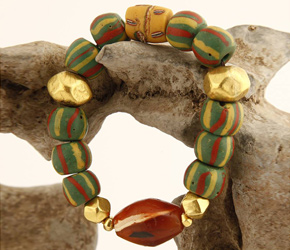 |
|
|
|
与非洲贸易中使用的玻璃珠以“贸易珠”为名,因为学者们能够通过沿特定路径的类似珠子来追踪贸易路线。他们要做的就是连接点。贸易珠成为了15世纪欧洲人到来的重要市场产品。玻璃珠主要来自威尼斯,用于象牙,黄金,香料,棕榈油和奴隶。这种新的珠子风格受到非洲国王和贵族的极大赞赏和垂涎。如此之多,威尼斯玻璃制造商创造了大量生产玻璃珠的技术。他们甚至在波西米亚的邻近工匠的帮助下获得了帮助。我们今天在大多数20世纪的非洲艺术中看到的珠子主要是荷兰语和意大利玻璃贸易珠。但是,应该指出的是,并非所有玻璃珠都进口。非洲工匠的地面和重新装饰的玻璃,试验玻璃制造技术,这些技术将诞生独特的模式和图案,而这些模式和图案独有。
在非洲艺术中,珠子的使用普遍存在。他们装饰洋娃娃,围裙,裙子,皮带,口罩,皇冠和头饰。在某些情况下,它们的使用纯粹是装饰性的。在其他情况下,它们的重要性在于它们的象征。正如几千年前的那样,今天是。精致的装饰和装饰表明权力,权威和社会地位。首先,一个人看一下部落人所穿的珠子的质量和数量,您会立即知道它们属于社会等级制度。从贝壳,石头和金属到伊斯兰和威尼斯玻璃,珠子在非洲历史上都是不变的。他们说历史,贸易,声望和自豪感的语言。如果您仔细听,您可以听到。 If you look closely, you can see. If you imagine intently, you can feel this unique language.
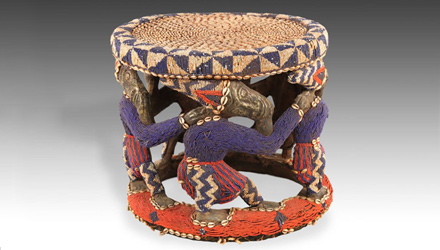 |
|
|
Download this blog:
{module_literature,i, 139097}